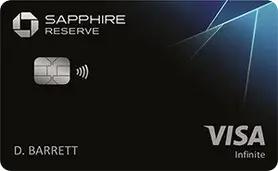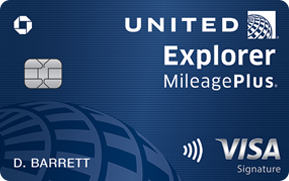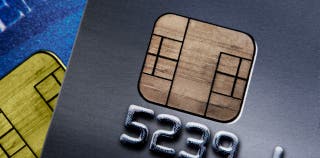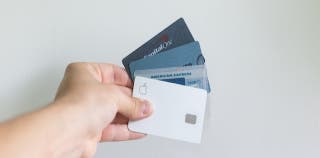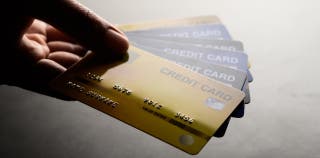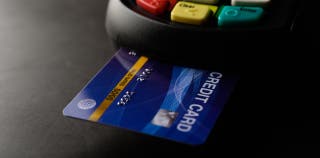What is Chase Pay Yourself Back?
Chase Pay Yourself Back is a rewards redemption option that was introduced by the card issuer in the midst of the pandemic. As COVID-19 reared its ugly head and dramatically reduced travel in 2020, this program made it possible for consumers to redeem their Chase rewards for everyday expenses with an upgraded redemption rate.
“Now more than ever we know our cardmembers want options to get the most value from their rewards,” said Matt Massaua, Head of Ultimate Rewards and Loyalty Solutions, in a press release in May of 2020. “We’re continuing to give our customers choices so they have the flexibility to use their points in the most meaningful ways for them.”
Since it was introduced at the height of the pandemic, it’s not surprising that the Chase Pay Yourself Back program has changed dramatically since its introduction. Where the program once let eligible cardholders get more value when redeeming rewards for everyday purchases in categories like grocery stores, home improvement stores, and dining, bonus categories have morphed over time along with eligible cards that participate in the program.
The latest on Chase Pay Yourself Back
At the moment, most Chase credit cards offer some limited-time benefits related to Pay Yourself Back, but the value varies from card to card. We’ll explain your options below.
Pay Yourself Back cards, categories, and value
| Chase Credit Card |
Categories |
Redemption Value |
| Chase Sapphire Preferred® Card |
Eligible charitable contributions* (through March 31, 2024) |
1.25 cents per point |
| Chase Sapphire Reserve® |
Gas stations, groceries, annual fee, and eligible charitable contributions* (through March 31, 2024) |
1.25 cents per point |
Ink Business Preferred® Credit Card
Ink Business Cash® Credit Card
Ink Business Unlimited® Credit Card
|
Eligible charitable contributions* (through December 31, 2024) |
1.25 cents per point |
| Aeroplan® Credit Card |
Annual fee and travel purchases |
1.25 cents per point |
| Southwest consumer cards |
Annual fee and gas |
1 cent per point when used toward the annual fee, 0.8 cents per point when used toward gas (limited to $300 in spending through March 31, 2024) |
| United consumer cards |
Annual fee and eligible United airfare transactions |
1.5-1.75 cents per mile, depending on the card for annual fee statement credits, 1 cent per mile for eligible United airfare transactions |
As a Chase cardholder, you have the opportunity to use your points for charitable causes through Chase Pay Yourself Back. While the program currently only works with a select group of eligible charities, it offers a great value for your points, with 0.8-1.5 cents per point. This is a great way to make a positive impact and make the most out of your points.
*Eligible charities that work with Chase Pay Yourself Back include:
- American Red Cross
- Equal Justice Initiative
- Feeding America
- GLSEN
- Habitat for Humanity
- International Medical Corporation
- International Rescue Committee
- Leadership Conference Education Fund
- NAACP Legal Defense and Education Fund
- National Urban League
- Out & Equal Workplace Advocates
- SAGE
- Thurgood Marshall College Fund
- United Negro College Fund
- UNICEF USA
- United Way
- World Central Kitchen
How does Chase Pay Yourself Back work?
Chase Pay Yourself Back is essentially a statement credit program that lets cardholders get more value for their rewards points. That said, it’s worth noting that Chase credit cards already let consumers redeem points for statement credits to their accounts at a rate of one cent per point.
With Chase Pay Yourself Back, however, Chase cardmembers have been allowed to redeem points for purchases in eligible categories with a better redemption rate.
Pros and Cons of using Chase Pay Yourself Back
How to use Chase Pay Yourself Back
Follow these steps to use Chase Pay Yourself Back:
How to request a statement credit
Once you choose an eligible purchase on your Chase card, you are essentially requesting a statement credit on your account. When you use Chase Pay Yourself Back, Chase will post a credit to your online account within three business days of your request. Using Chase Pay Yourself Back may offer you a higher redemption value for non-travel options than you would get otherwise.
Statement credit options on other purchases
With Chase, you have the flexibility to redeem your points for statement credits on any purchase or for more value when booking travel through the Chase travel portal. The standard redemption rate is one cent per point, but cardholders with the Sapphire Reserve can enjoy 50% more value for travel redemptions, while the Sapphire Preferred and Ink Business Preferred® Credit Card cardholders can get 25% more value. Make the most of your points with Chase.
Are Chase Pay Yourself Back and Chase Travel℠ the same thing?
Chase Ultimate Rewards (now called Chase Travel℠) and Chase Pay Yourself Back are different. Chase introduced Pay Yourself Back as an ongoing redemption option within Chase Travel℠.
Chase Pay Yourself Back is a feature that allows eligible Chase cardholders to redeem their points for statement credits on select purchases, including groceries, home improvement, and dining.
Chase Travel℠ is a rewards program that allows cardholders to earn points for purchases made with a Chase credit card. These points can be redeemed for cash back, travel, gift cards, and other rewards. The value of the points can be increased when using certain cards or redeeming for certain options.
How much is each Chase point worth?
The value of Chase points depends on how you redeem them. However, most experts agree that Chase points can be worth up to 2 cents each when transferred to airlines and hotels for premium travel redemptions.
That said, point values vary depending on the redemption. For example:
| Redemption Option |
Chase Point Value |
| General statement credits |
1 cent per point |
| Pay Yourself Back statement credits |
0.8 cents per point to 1.5 cents per point |
| Travel through the Chase portal |
1 cent per point to 1.5 cents per point |
| Gift cards |
1 cent per point |
| Apple purchases |
1 cent per point |
| Amazon.com purchases |
0.8 cents per point |
Is Chase Pay Yourself Back worth it?
Chase Pay Yourself Back can definitely be worth it, particularly if you’re getting 25% or 50% more value for purchases or charitable donations you planned to make anyway.
However, the Chase Travel℠ program is geared to travel, so you will likely find that the best value redemption options come from travel purchases or transfers to airline and hotel loyalty programs.
For example, you may get more than 1.5 cents per point in value if you transfer your Chase points to partners like Air France-KLM, Marriott Bonvoy, Southwest Rapid Rewards, United MileagePlus or World of Hyatt. Also note that Sapphire Preferred, Sapphire Reserve and Ink Business Preferred® Credit Card cardmembers always get 25% or 50% more value when redeeming points for travel through the Chase portal.
Explore related articles by topic
You’ve viewed 3 of 3 articles
LOAD MORE



